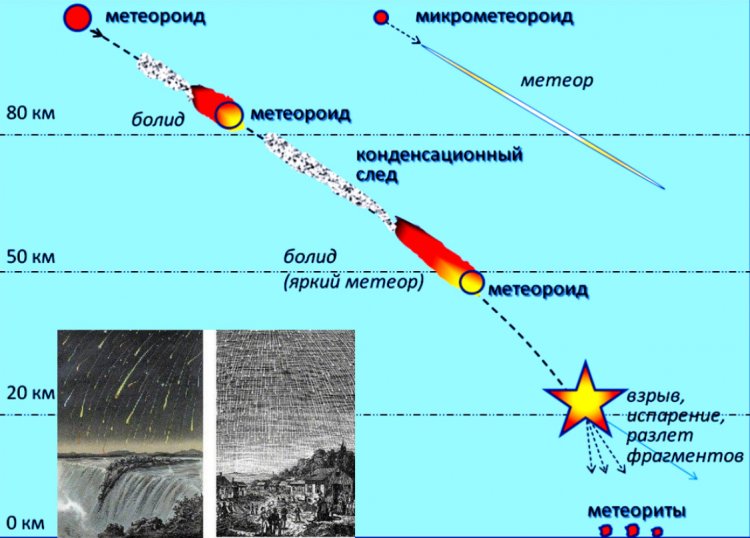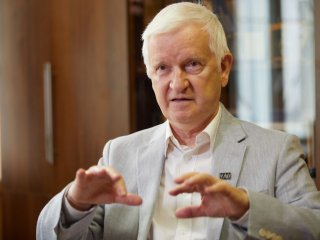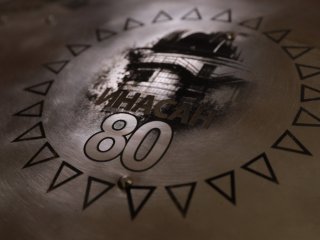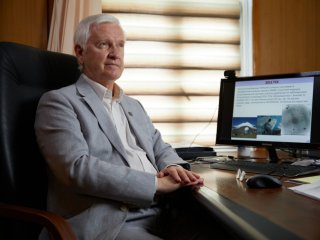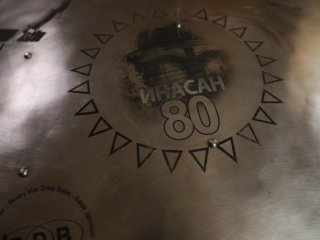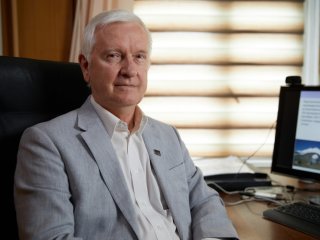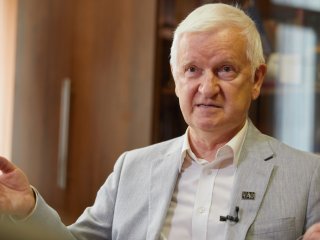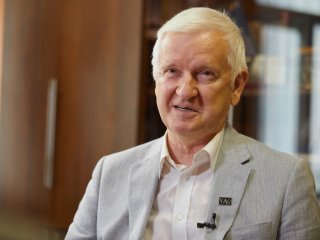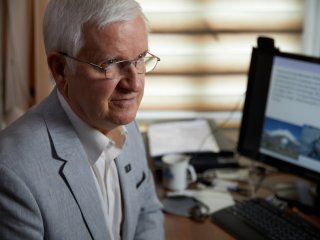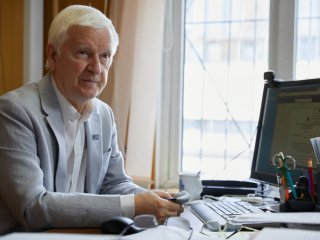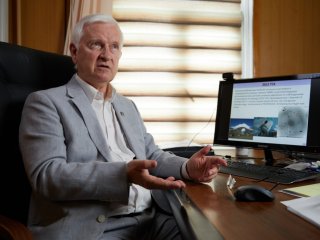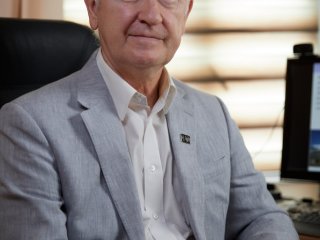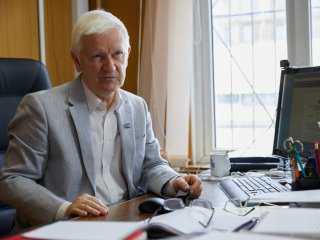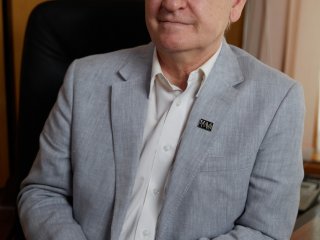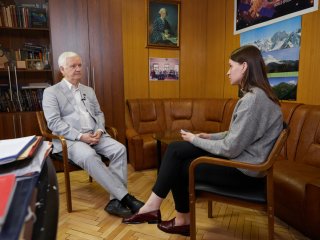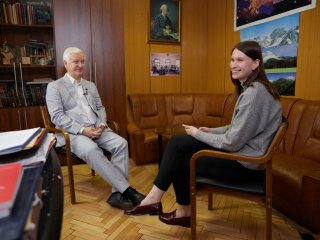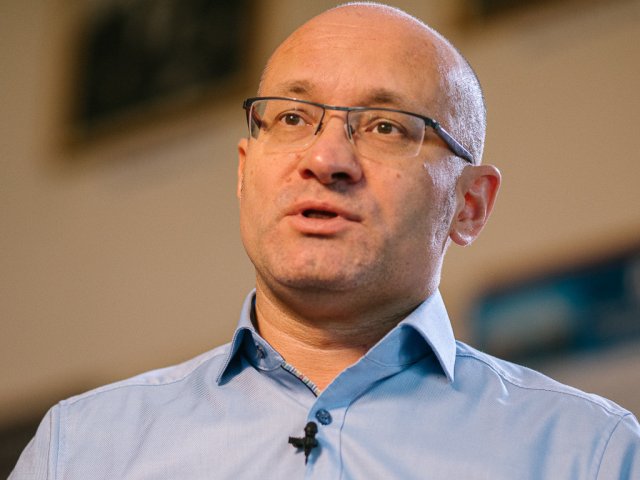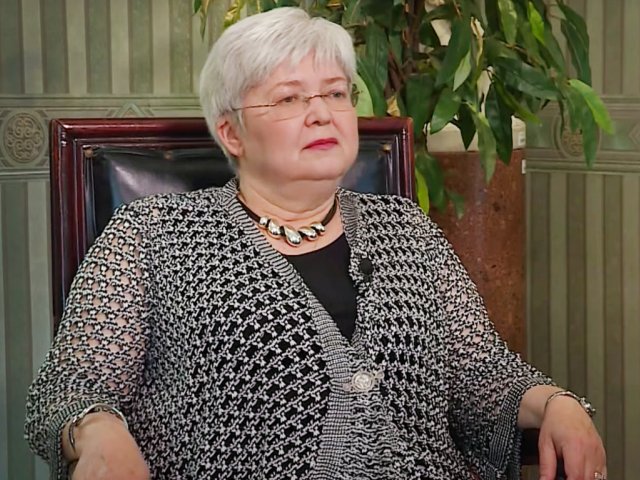In movies, asteroids make us scared due to unpredictable behavior and potential collision with the Earth that looks inevitable until NASA finds a hero and sends them to the asteroid for planting the explosive. A noiseless explosion follows, and the asteroid drifts off the dangerous course. We see happy end again. It is interesting that Hollywood is not alone to deal with such scenarios. For instance, every two years, before the start of international conference devoted to protection of our planet, the scientists model the situation of a large asteroid approaching the Earth. They work out the methods of computing the course and suggest measures to combat the alleged collision. To what extent is the space safe for the Earth and predictable for the Earthlings? Are we ready for preventing a space threat in reality? Why did the Chelyabinsk meteorite remain unnoticed by radio locators? The answers are provided by one of the Russian chief specialists in space threats Boris Shustov.
Boris Shustov – Academic Director at the Institute of Astronomy, Russian Academy of Sciences (RAS), Head of Expert Working Group for Space Threats under the Space Council of RAS, Correspondent Member of the Russian Academy of Sciences.
Photo: Nikolay Malakhin, Scientific Russia
— Boris Mikhailovich, you, as the head of working group under the Space Council of RAS, often speak about the space threats including the one posed by asteroids and comets. What is this threat about, and how serious may its consequences be for our planet?
— I will start by saying that we live in the world which is full of various hazards. However, it looks quite normal. Our existence is based on coping with such dangers. The more we know, the more dangers we notice. King Solomon is credited with the following phrase – “In much wisdom is much grief, and he who increases knowledge increases sorrow.” Now then, the spaceflights and enlarging the borders of knowledge have naturally opened up not only new horizons for us, but the understanding of many dangers existing in space.
As a first step, let us provide definitions for notions danger and threat. Fundamentally, danger is a certain factor that may potentially have a negative impact on the life and health of either individual or mankind in general. As for threat, it is a danger made more detailed and specific. For instance, the cosmonauts and astronauts staying on board the ISS (International Space Station) face the danger of coming into collision with space debris. On the other hand, the collision of space station with some specific object, like wreckage of satellite, at a certain moment may pose a threat. I mean that the threat is always specific with regard to place and time – the parameters that define risks and decisions required to mitigate them. For instance, if the risk of coming into collision with a fragment having 1 cm in diameter amounts to 0.0001, the cosmonauts on board the ship take avoidance maneuver. Such actions are taken by inhabitants of ISS several times a year.
Among space threats, the scientists naturally emphasize both space weather and unpredictable behavior of the Sun, as solar flares, which occur from time to time, lead to serious consequences. One more type of threats is biological one. Space crafts launched into outer space inevitably carry microorganisms on board, and some of these microorganisms come back during certain experiments. The Institute of Bio-Medical Problems of RAS has conducted several remarkable experiments of Biorisk series devoted to exposing microorganisms and even more developed lifeforms in the open space. During one of them, the microorganisms returned from the space 31 months later being revivable enough.
The next type of space threats is astrophysical one. Some media of low social responsibility sometimes intimidate the public reporting that, say, Betelgeuse star will explode, or gamma bursts will deal a crippling blow to the Earth. It is important to understand that there are such astrophysical hazards, yet they make themselves manifest on a very long-time scale. Are you worried about what will happen in a million or even billion years? I think that you are not. Naturally, astrophysical threats are of a certain interest, and there are many of them. However, such threats constitute a serious topic for astronomers and astrophysicists alone, and this problem is rather important from the fundamental point of view.
Finally, we can talk about the danger posed by asteroids and comets, as there is potential risk of the Earth coming into collision with small bodies of the Solar System. Under small bodies, we mean versatile objects – from cosmic dust to large asteroids having thousands of kilometers in diameter. By the way, many asteroids do not look like monoliths, but rather represent a sort of heap of stones. Many studies and even expeditions sent to asteroids have found the evidence of it.
The hazard posed by asteroids and comets has always existed, exists now and will exist in future. The very Earth has once come into being due to such bombardment with comets and asteroids. However, these processes have naturally eased off with time. Meanwhile, the rate of bombardment has not changed over the past two-three billion years. The evidence of it can be found in our space journal which perfectly records this type of events. I mean the Moon, satellite of the Earth. Numerous craters that exist on the Moon have formed up due to heavy blows, and they remain almost unchanged. There were a lot of craters on the Earth as well. Yet, erosion processes led to the fact that the majority of these craters disappeared, and we know nothing about them. Today, there are about two hundred such craters on our planet. Popigai located on Taimyr Peninsula is one of the largest craters on the territory of our country.
It is clear that asteroid bombardment will continue. However, the question is how significant the danger of collision is. Naturally, if a space body 1 kilometer in diameter comes into collision with the Earth, it will lead to a catastrophe of global scale. It is even not so important where this body will strike a blow at. The response will affect the whole territory of our planet. A space body 300 meters in diameter, like notorious Apophis, is capable of destroying a region. The famous Tunguska meteorite having 50 meters in diameter and dimensions of 14-storied building could destroy the territory of Moscow completely. Even 17-meter Chelyabinsk meteorite has inflicted damages, albeit comparatively insufficient ones. Chelyabinsk was lucky in this regard. In case the meteorite followed a steeper trajectory of descent, almost vertical one, the meteorite would have exploded much lower. In this case, the destruction would be much more serious. Such events, yet of smaller scale, occur all the time, every day and even every hour. It is that small particles burn up in the atmosphere, and we see them in the form of fireballs or bolides. A space body comparable to Chelyabinsk meteorite falls down once every 20 years at the average. As for the one similar to Tunguska meteorite, such phenomena happen once in thousand years. Larger bodies fall down even more seldom.
The difference among fire-ball, bolide and meteorite
— What tasks are set to specialists in asteroid-comet threat?
— Today, it is very important to assess the level of danger for mankind, and detect the bodies that may potentially come into collision with the Earth. As it turned out, the task is far from being simple. As for large space bodies or small planets, we can see them clearly even from a long distance. However, it is hard to notice smaller bodies 50-100 meters in diameter, which may pose potential danger. Our knowledge of these bodies is scarce. What kind of knowledge should it be? We need to know the location of the body, its speed and how it is moving. In this case, we can predict where it will be, say, in some 20 years, and whether it will come into collision with the Earth or not. The completeness of our knowledge amounts to just about 1% for the bodies like Tunguska meteorite, 20-30% for the ones like Apophis and close to 100% for the space bodies having a kilometer or more in diameter. Put simply, the most dangerous space bodies were discovered just because of their size. Thus the primary objective for the astronomers dealing with hazards posed by asteroids and comets lies in building a system that will allow for detecting potentially dangerous bodies and predicting their movements and behavior. The second task is about risk evaluation. It includes several scientific and technical areas. The fact is that a high-quality forecast of the body’s orbital motion is required to make sure if it comes into collision with the surface of Earth or not.
The Solar System is a very complex object comprising lots of gravitating bodies. It looks as if the system is breathing. That is why one can hardly describe it using one or two formulas of Kepler’s laws alone. The problem is actually much more challenging.
It is clear that small bodies are much more subject to the influence of larger objects than vice versa. That is why they can easily transfer to unconventional orbits, which are studied by specialists in celestial mechanics.
Evaluating the risks, we should understand what kind of object is the body in question. If it is, say, a monolith, one type of measures is required. If the body represents a heap of stones, we have to take advantage of different set of activities. In case the object in question is just a mixture of dust and ice, i.e., a comet (or March snowbank, as American astrophysicist Fred Whipple called it), such body is not as dangerous as the rock with the same dimensions, because it is friable and soft, and may fall into pieces even before reaching the Earth. Therefore, it depends upon the body’s composition as well whether the object inflicts serious damages to the Earth or not. Thus we need to know what exactly it consists of.
— How can we do it?
— We measure reflected solar radiation with the help of telescopes. To make it clear, let us take the notion of spectrum. Each of us learns about the world proceeding from spectral perception. Just recall the famous saying – all cats are grey in the dark. Indeed, we can see only the contours of the cat in the dark room, as the color specification is missing in this case. When the light is switched on, we get additional informational dimension. That is why color is a very important parameter. The astronomers actually measure color, i.e., energy coming in waves of different length, and get the idea of the body’s composition.
— How are the consequences as to the fall of a space body forecasted?
— The fact is that it is rather difficult to calculate the consequences of the fall, though there are the respective formulas. I will start by saying that the majority of people on the Earth live in coastal areas, so tsunami should be considered as one of the casualty-producing factors in this case. If a large body about 200 meters in diameter falls down somewhere near the sea coast, we cannot avoid tsunami. Thus it is hard to predict devastating consequences, as they depend heavily upon the bottom relief features and specific locality. Therefore, special tables of tsunami consequences are drawn up for such events.
The data is calculated on super computers beforehand, and this data is later used for making decisions. Within the framework of this area, my colleagues and I suggested drawing up a special tsunami table for the most dangerous regions where great number of people, production units and other infrastructure objects are concentrated. Naturally, we do not know for certain when and what will fall down there. But if it still happens and we have enough time to report about the place of fall and dimensions of the space body, the respective authorities will be able to make decisions quickly knowing what consequences to expect and what measures to take. The idea is being discussed so far, but the Institute of Geosphere Dynamics has already started implementing it.
—What measures are taken in case of a serious threat to the population?
—As a rule, two methods of coping with the threat are viewed today. The first one makes provisions for deviating the space body posing a threat from the dangerous orbit beforehand (10-20 years before). However, this variant is suitable for cases, when we know beforehand that the body is moving towards the Earth and will inevitably collide with it. When the dangerous asteroid is close, the deviation method is ineffective, and the body should be shot down at once.
These topics are continuously discussed at the UN. However, there are no other effective methods, except arms impact and nuclear technologies.
— Recently, the International Academy of Astronautics has held the 7th conference on planetary protection under the aegis of the United Nations Office for Outer Space Affairs (UNOOSA) in Vienna. Can you tell us about the key questions discussed at the event?
— The conference was devoted to three areas of asteroid-comet threat: methods of detecting bodies, the ones of evaluating risks, and measures aimed at combatting the threat and mitigating damages. Due to pandemic, the conference was held in the remote mode. It is the main event on a two-year time scale for specialists in asteroid-comet hazard.
Along with the main topics, the participants of the forum discussed social questions. In such situations, it is very important to convey the information to the public in the right way, in order to avoid possible panic. The fact is that panic may be even worse than the fall of asteroid with regard to potential consequences.
Besides, sort of training exercises that had become traditional were held within the framework of the forum. Several weeks before the start of the conference a scenario was modelled – a body moving towards the Earth was allegedly detected in space. Then, the data as to its orbit, dimensions and speed were gradually specified. At the beginning, the region of its possible fall was approximately estimated at having the area of about 20,000 kilometers. As new information was becoming available, the area was narrowing down. After that, the participants discussed the methods of interaction, informing the people and evacuating them.
The next conference devoted to the threat posed by asteroids and comets will be held in Vienna in two years. The UN pays serious attention to the said topic, as well as the problems of space debris and space weather. Every February, the United Nations Committee on Peaceful Uses of Outer Space holds a research and technology session with the specialists dealing with research and technology problems. Later, in June, the Committee discusses legal problems as well. Over the period from 2002 to 2013, I have been acting as the representative of Russia in AT-14 working group, which deals with the problems related to objects coming close to the Earth. The work resulted in drawing up a document comprising the UN guidelines as to what should be done in case a comet or asteroid comes into collision with the Earth.
In accordance with our recommendations, a consultative group for planning space flights – Space Mission Planning Advisory Group was formed. The members of this group are working over creating space crafts for studying dangerous space objects, as well as developing measures for combatting potential threats in this respect. One of the main current projects deals with the flight to double asteroid Didymos. The project envisions the launch of two groups of space crafts. The first one – DART (USA) – acts as an impact craft. The second group European space craft HERA acts as the main observer. Besides, several small CubeSat crafts are involved. DART is to be launched approximately in a year. Then HERA will start for the asteroid..
As I have mentioned, Didymos is a double asteroid. It is a one-kilometer space body with small satellite Didymoon moving around it. It is planned that striker DART will butt up against the satellite and change the period of its circuit of Didymos. It will allow for assessing the efficiency of this space kinetic weapon, as well as analyzing the space body’s internal composition.
Besides, program International Asteroid Warning Network under the aegis of the UN is also working very actively. The largest space agencies and observatories including amateur ones are the members of it. However, the activities are being carried out on a voluntary basis. The main task of the program participants lies in forming the basis for international cooperation aimed at detecting hazardous space bodies. No state can cope with this threat alone today. Thus, it is necessary to pull together efforts and create an extensive network. Only in this case, we have a chance to detect the space guests in time.
— What project did you present at the international conference in Vienna?
— I presented Russian project devoted to detecting small space bodies which are flying from the Sun’s side, i.e., at daytime. The Chelyabinsk meteorite was not noticed by astronomical equipment, as it fell down from the sky at daytime. Optical telescopes turn blind in conditions of daytime sky. As for radio locators, they operate on short distances. Thousands of kilometers play no role here. We should detect space objects much earlier, when they are located at the distance of several million kilometers from the Earth. The fact is that asteroids are flying at a very high speed. They are capable of covering a thousand kilometers per minute. On the other hand, hours, even dozens of hours are required to take the essential measures. That is why we should detect such a body at a distance of, say, one million kilometers from the Earth, i.e., thrice the radius of lunar orbit.
At daytime, the Sun prevents us from monitoring the sky. So, we suggested bringing the spacecraft to L1 – Lagrangian point (libration point located at a distance of 1.5 million kilometers from the Earth in the direction to the Sun). What makes the libration point so interesting? The space craft brought to this point will move along an orbit jointly with the Earth without spending energy, as it will have to correct the orbit using engines very seldom. Our telescope will turn its back to the Sun describing a sort of cone around the Earth and register all space bodies over 10 meters in diameter which will cross this cone path, i.e., come close to our planet. We called this project SODA (System of Observation of Daytime Asteroids).
The Russian Federal Space Agency (Roscosmos) shows an interest in it, and the question is actively discussed. We hope that the implementation will begin shortly, as our country has an opportunity of establishing itself as a leader in this area. It is enough to launch a small (25-30 cm in diameter) telescope, which will record all bodies exceeding 10 meters. They require special attention in the context of asteroid-comet hazard, as these bodies come into collision with the Earth most often.
— Do other countries pay attention to this problem? Are there any positive examples?
— Yes, there are positive examples. It is true for the USA first of all, as the respective work began in 1990s there. A whole state program was developed. In this case, the matter in question is not about financing alone. The attention on the part of the state changes the attitude of scientists towards the task, as it emphasizes its importance. Unfortunately, there have been and are no such programs in our country.
As for the USA, by the way, it was not by chance that the program was developed there. Initially, NASA would try to pull out of this area of research saying that the mission was out of its area of competence. However, the situation changed in 1989, when a large 300-meter asteroid passed by the Earth’s orbit. It was detected only on the leaving orbit. The American scientific community changed its mind at once, and serious discussion began as to whether the mankind is ready for such events in future. After that, in mid-1990s, NASA initiated program Space Guard. The rate of detecting dangerous space bodies immediately started demonstrating growth. New instruments programs and specialists started to appear, which resulted in the USA absolutely dominating in this area of research.
— The understanding of this research area being important came to Russian scientific community after the fall of Chelyabinsk meteorite, didn’t it?
— I would say that the law on NASA includes a list of tasks that the Agency is responsible for. This document (NASA Authorization Act) says that the space agency assumes responsibility for organizing the process of detecting dangerous space bodies if natural origin. In 2015, Russian authorities adopted the law on space activities which includes similar phrase (the result of our nagging). However, the meaning of the formulation is so far on the level of suggesting that Roscosmos should deal with this task. Meanwhile, the problem cannot be just waved away already. Moreover, America is not alone to be active in this field. Telescope Fly-Eye of the European Space Agency has been recently launched in Sicily. Many lenses are monitoring a large section of the sky simultaneously. The Chinese colleagues are launching a fantastic, from my point of view, project. It is the network of almost 80 telescopes specifically designed for studying the bodies approaching the Earth.
— Speaking about asteroids, people often recall Oort Cloud and famous Kuiper Belt. Do all of the objects come from these areas, or there are guests from distant regions?
— The asteroids mostly come from the so-called Main Belt of Asteroids – a ring-form area located between Mars and Jupiter. Some of them come from distant suburbs of the Solar System. And so far, we know only two bodies having come from interstellar space.
Speaking about Oort Cloud, it stands to mention that we have long got accustomed to the borderline of Solar System being drawn in the area of Pluto’s orbit. In fact, it is naturally much longer. There is a lot of data indicating that the Solar System is submerged into a huge spherical cloud of small comets having the minimum size of 1 kilometer. These are icy bodies that have remained since the time of the Solar System being formed.
Besides, the Sun is not the only star in the galaxy. It is moving relative to other stars. When two stars are coming close to each other, which can happen as often as not, the other star may make impact on Oort cloud with its gravitation changing the orbits of some comets. However, such events happen very seldom. As for the majority of asteroids coming to the Earth, they are from the Asteroid Belt. The topic of asteroids’ origin is also very interesting and still relevant.
— What measures should be taken today to mitigate this threat?
— At present, we know all space bodies having 1 kilometer in size. We also know that none of them will come into collision with the Earth over the next thousands of years. The most serious danger comes from collisions with smaller bodies which produce local effect. That is why we ought to develop our own space surveillance network which is to be integrated into the international one. Why is it so important? The state officials often ask: “What do you need your own space surveillance network for? The Americans share the data they obtain.” Indeed, all events are recorded, and the respective data is publicly available at the Minor Planet Center (MPC) financed by the USA. However, it cannot be called full-fledged international cooperation. The fact is that real cooperation suggests mutual contribution to the common cause, otherwise we will act as spongers and can reckon upon the goodwill of Americans alone.
Besides, I would like to emphasize the important role of education. Fortunately, astronomy was returned to the school curriculum as a discipline. I hope that it does not play the role of stepson there. People should be educated. We live in the period when it is easier for the people to think in some sense. I mean that today people have many opportunities to make a decent living without racking one’s brain, by way of using clichés instead. The brain work looks not so attractive, as it demands efforts and criticism towards oneself above all. The brain work is difficult, while self-criticism is unpleasant. That is why many people use to find a substitute which is easier. They go in for astrology, chiromancy and other dubious things based on faith, and even spectacular superstitions. The total level of scientific awareness of the population ought to be raised anyway. First of all, it is true for natural sciences, astronomy in particular. The reputation of our science among the public is not so high today. The recent order of the State Commission for Academic Degrees and Titles introduced three specialties in theology, while three specialties in astronomy were reduced to only one – Space physics and astronomy.
The shield presented as gift by colleagues from the Institute for Space Research of RAS
Naturally, it is impossible to make all people deal with science. However, it is essential to provide such an opportunity for them and, as minimum, to tell them how the world works. I always say to young people, future astronomers: “You are not working for your own sake. Your mission lies in perceiving the world around us and conveying this knowledge to the people.” People may reject it, or refuse to take it seriously, yet your educating duty is to tell them about the structure of Universe and our complicated, yet wonderful world.
The interview was conducted with support of the Russian Ministry of Science and Higher Education and Russian Academy of Sciences.

